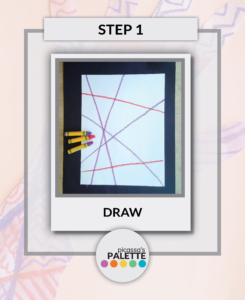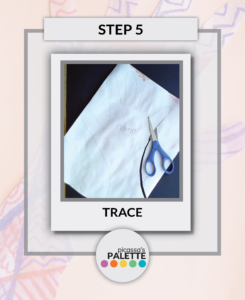
 AN ART LESSON FOCUSING ON LINE STYLE AND ANALOGOUS COLOR SCHEME
AN ART LESSON FOCUSING ON LINE STYLE AND ANALOGOUS COLOR SCHEME
I’ve taught this lesson to my lower elementary students as part of an Elements-based unit on LINE.
THE LINE STYLE WATERCOLOR HANDS ART LESSON
DIRECTIONS
FOLLOW THE STEPS LISTED BELOW:

STEP 1: DRAW
For the first step, choose 3-4 oil pastels.
Optional: use an analogous (colors next to one another on the color wheel) color scheme.
Use the pastel to firmly draw a line that connects one edge of the paper with the opposite edge.
Optional: use a ruler.
Draw about 6 lines, leaving enough space between them to later fill in the space with more drawn lines.

STEP 2: DRAW LINES TO FILL
Next, choose a line style. Use the pastel to fill in each space with multiple lines in that line style.
As you continue, remember that one line style per space should be used.
Example Line Styles: diagonal, wavy, vertical, horizontal.
Be sure to draw firmly. Extend the line all the way from one edge of the space to the opposite edge of the space. Try to keep your lines spaced evenly.
STEP 3: FILL ALL SPACES
Continue to fill each space with evenly spaced, repeated lines made from various line styles.
Check your work to make sure all spaces are filled completely with line styles and that you’ve used all the colors you’ve chosen.
At this point, also check to see whether any lines need to be made thicker.
STEP 4: PAINT
Next, use watercolor paints in the same color scheme, or use contrasting colors. Paint with enough water to make a light wash, in one color, applied evenly over each space.
Remember: The oil pastel lines will resist the watercolor paint.
Paint one space at a time. Then, let dry overnight.
STEP 5: TRACE
Next, use a precut template to trace. By positioning the right angle of the arm against the corner of the paper, you can fit the template onto a standard sized piece of white construction paper.
Be sure to write your name in pencil at the center of the template within the palm area of the hand shape.
STEP 6: CUT
Now it’s time to carefully cut on the traced lines.
For cutting small areas, such as the spaces between fingers, it’s ok to start cutting in from another edge of the paper to connect with the traced line. This helps you to continue cutting neatly on the line from an easier angle.
Hint: Save your largest scraps to use in other projects!

STEP 7: MOUNT
For the last step, choose a blank piece of construction paper in a coordinating color.
Be sure to add your name in pencil on the back of the construction paper before adding glue.
Now, apply glue or gluestick to the back side of the cut hand shape along the outside edges.
Hint: Remember that liquid glue spreads A LOT, so try not to get too close to the edge with that glue bottle! Dots, not lots!
HEY! YOU’RE FINISHED!
Nice job, Artists! Be proud of yourself for your best effort to be neat and complete!
SKILLS
The learner will practice:
- Tracing using a template
- Cutting on a line
- Drawing with an oil pastel
The skills emphasized in this lesson:
- Increase spatial awareness
- Improve fine motor skills
TECHNIQUES
While creating this lesson, students improve technique by:
- Determining line styles for repetition
- Replicating line styles within a defined space
AGE LEVEL
This Line Style Hands Art Lesson is designed for students in second grade but can be modified using simplification or by adding challenge to the criteria of the project.
When teaching students of different ages levels, a variation on materials or an emphasis on an advanced technique can modify the project to be appropriate for your own students’ capabilities and prior knowledge.
CONCEPTS COVERED
ELEMENTS OF ART
- Line (Line Styles)
- Color (Analogous, Color Scheme)
PRINCIPLES OF DESIGN
- Pattern (/Motif)



